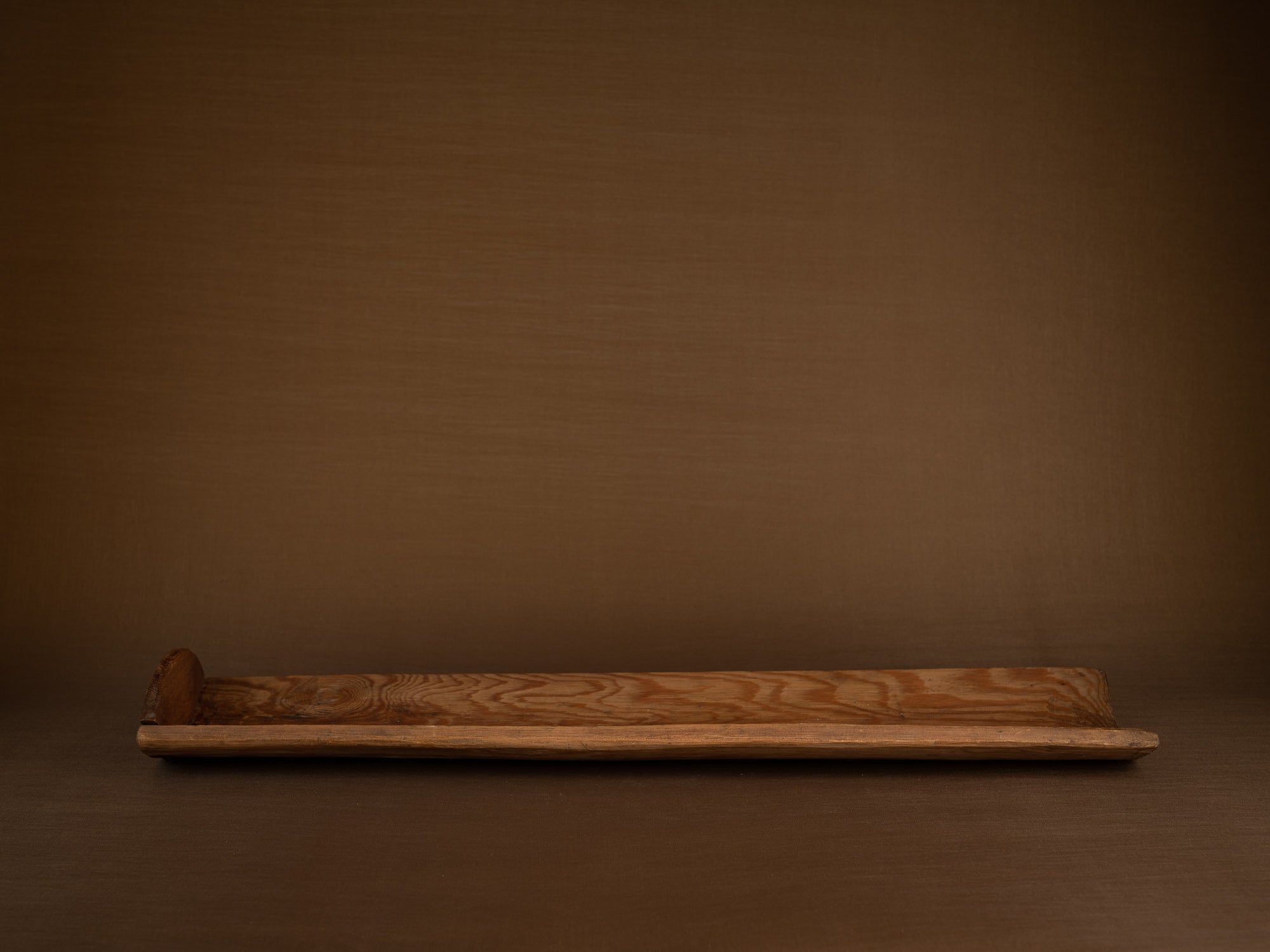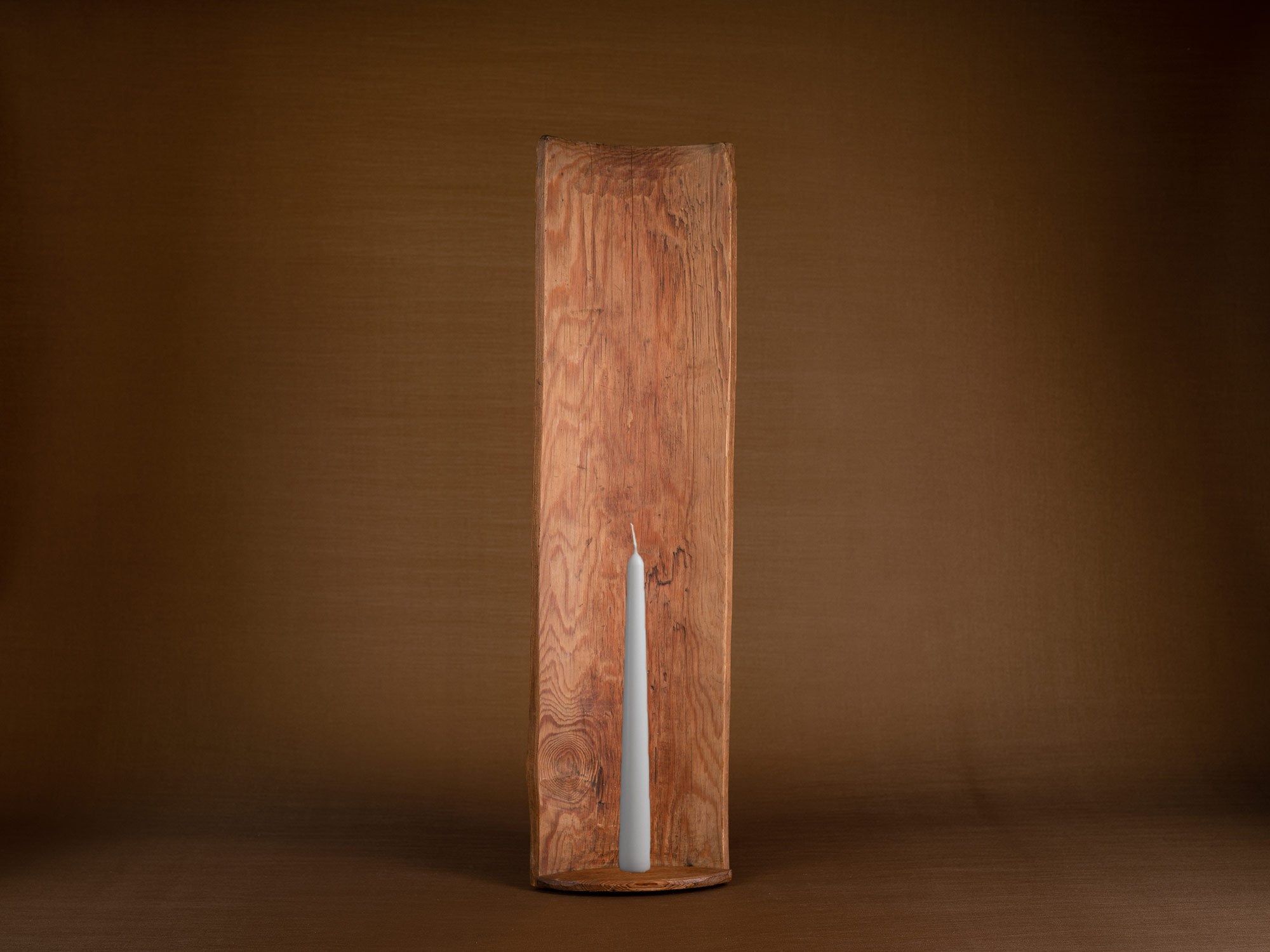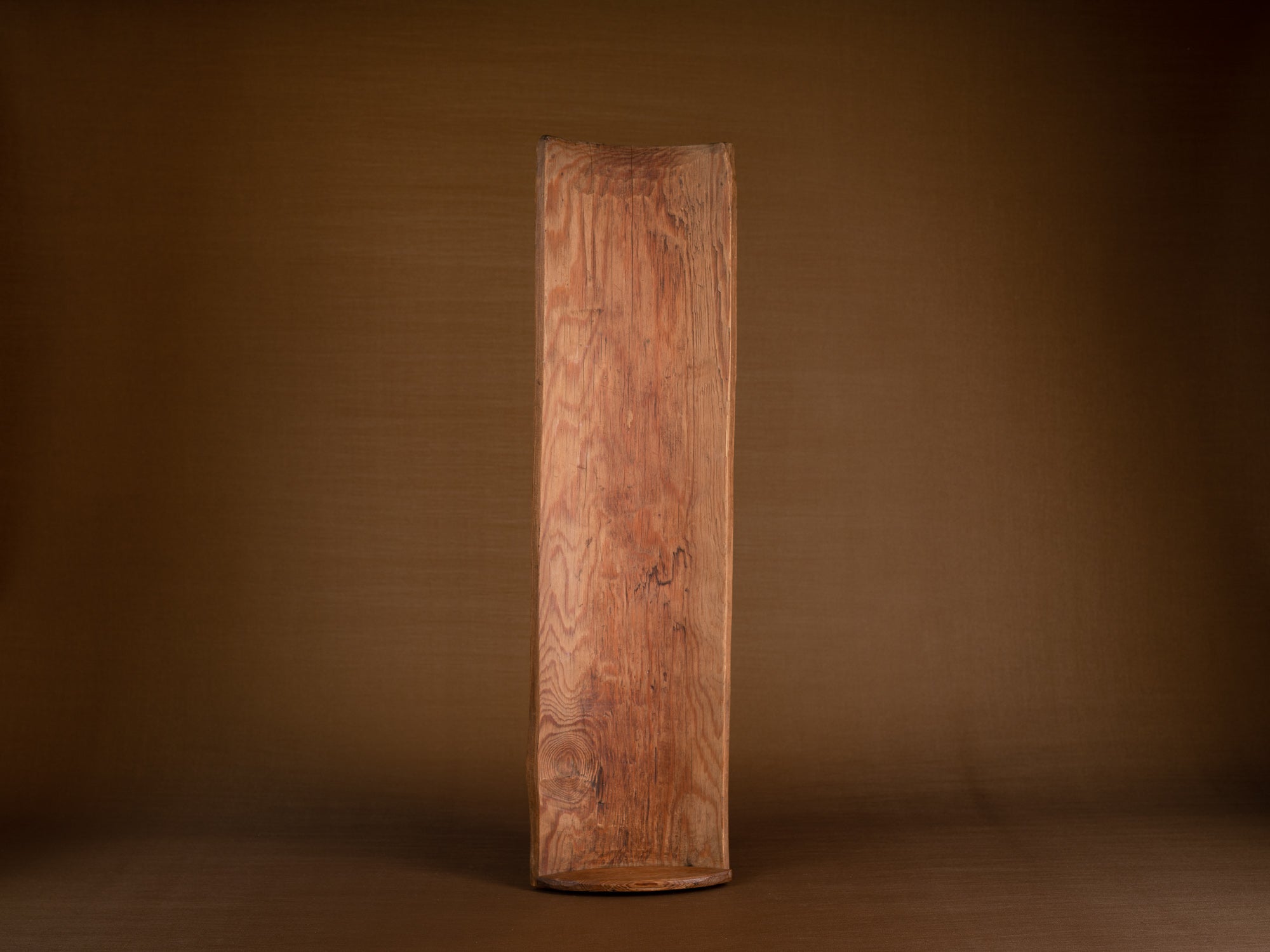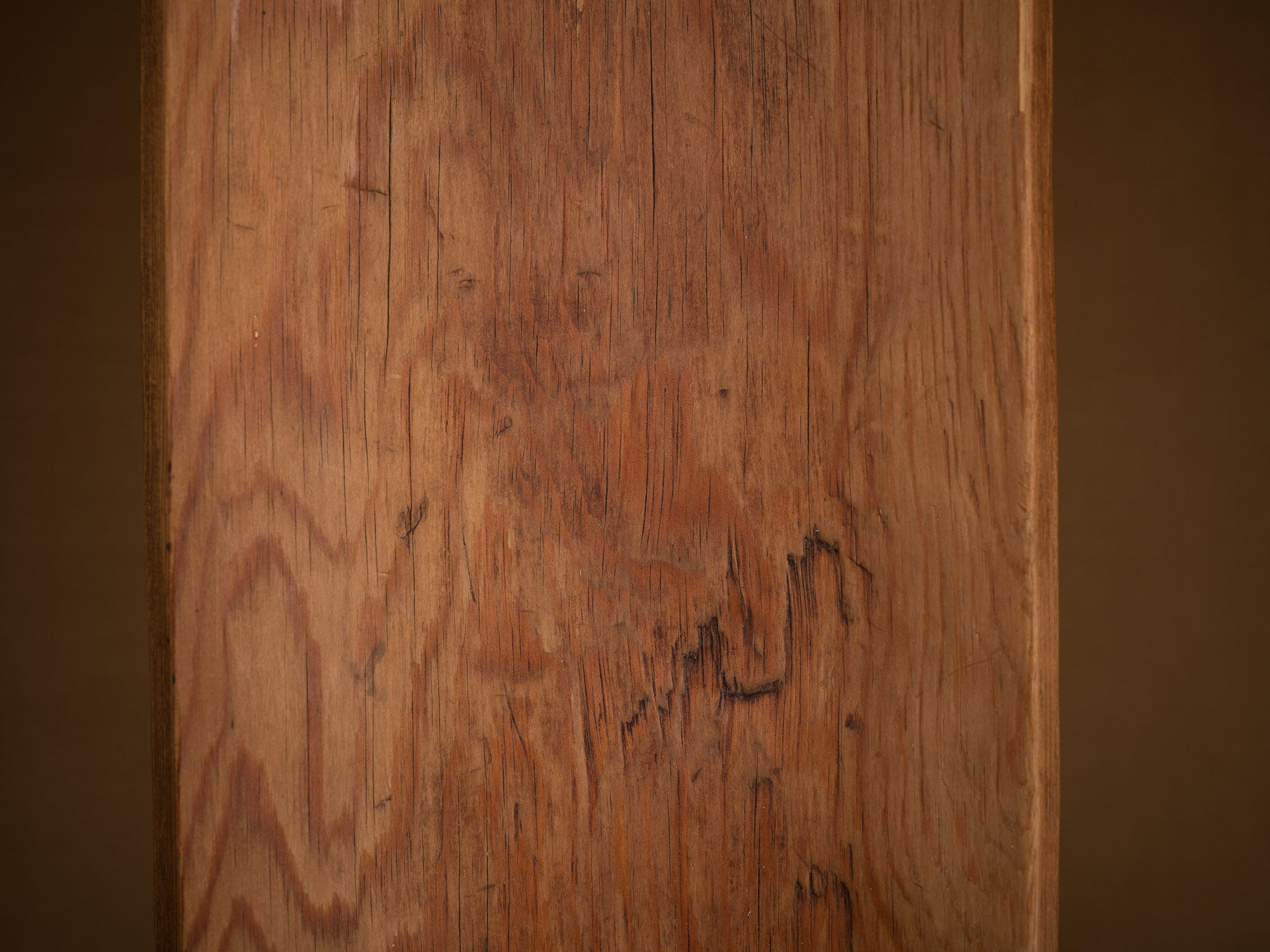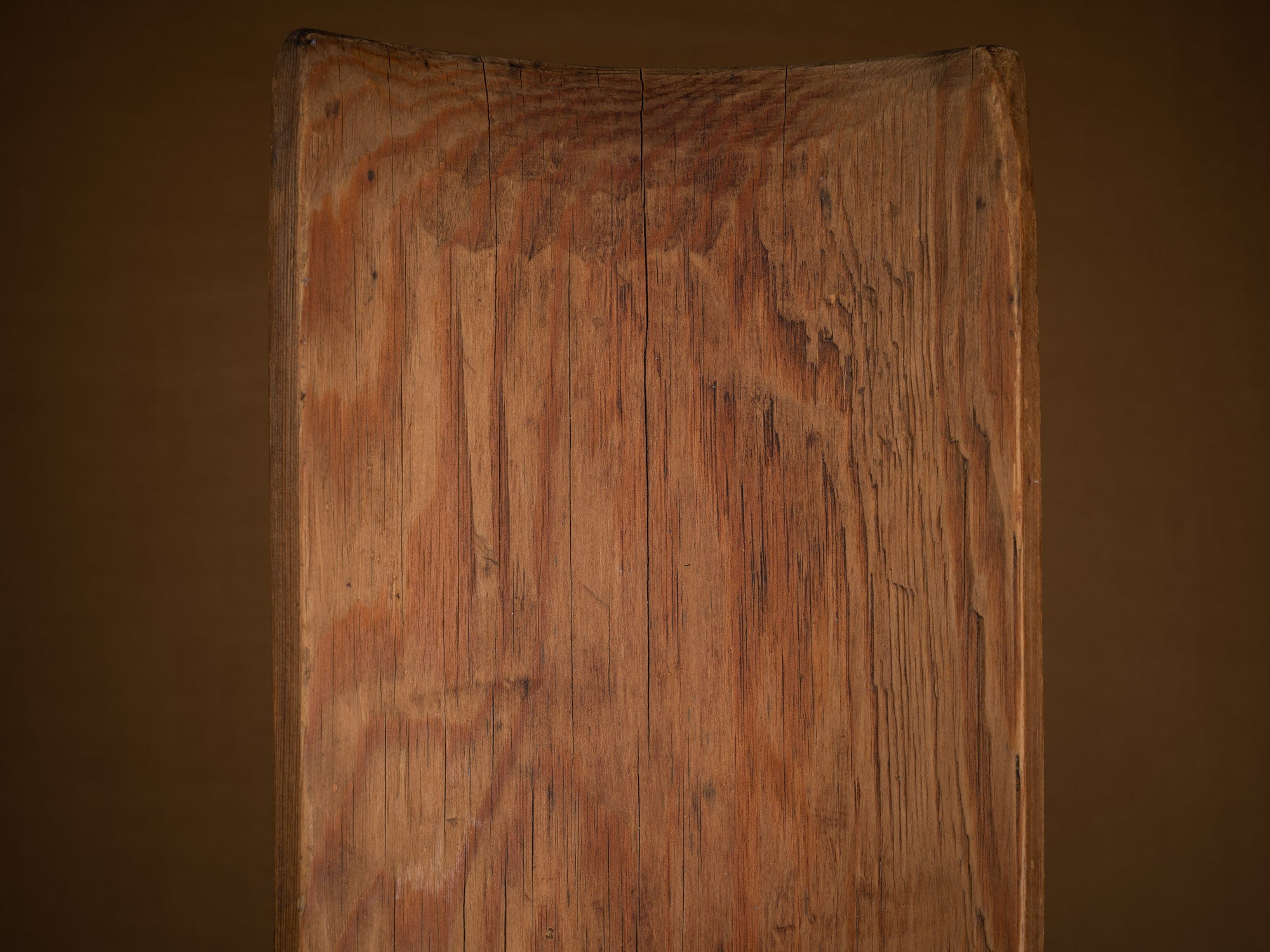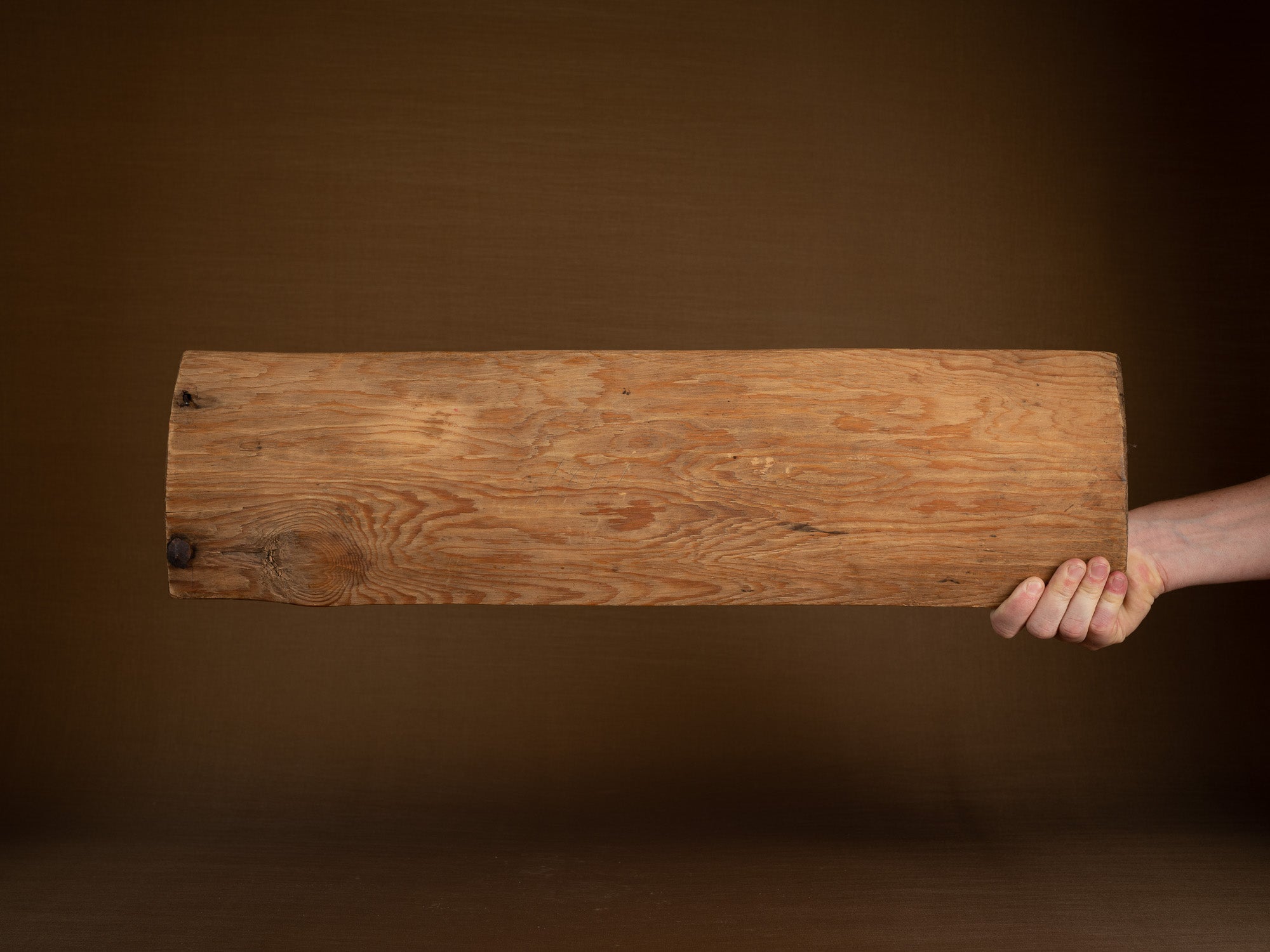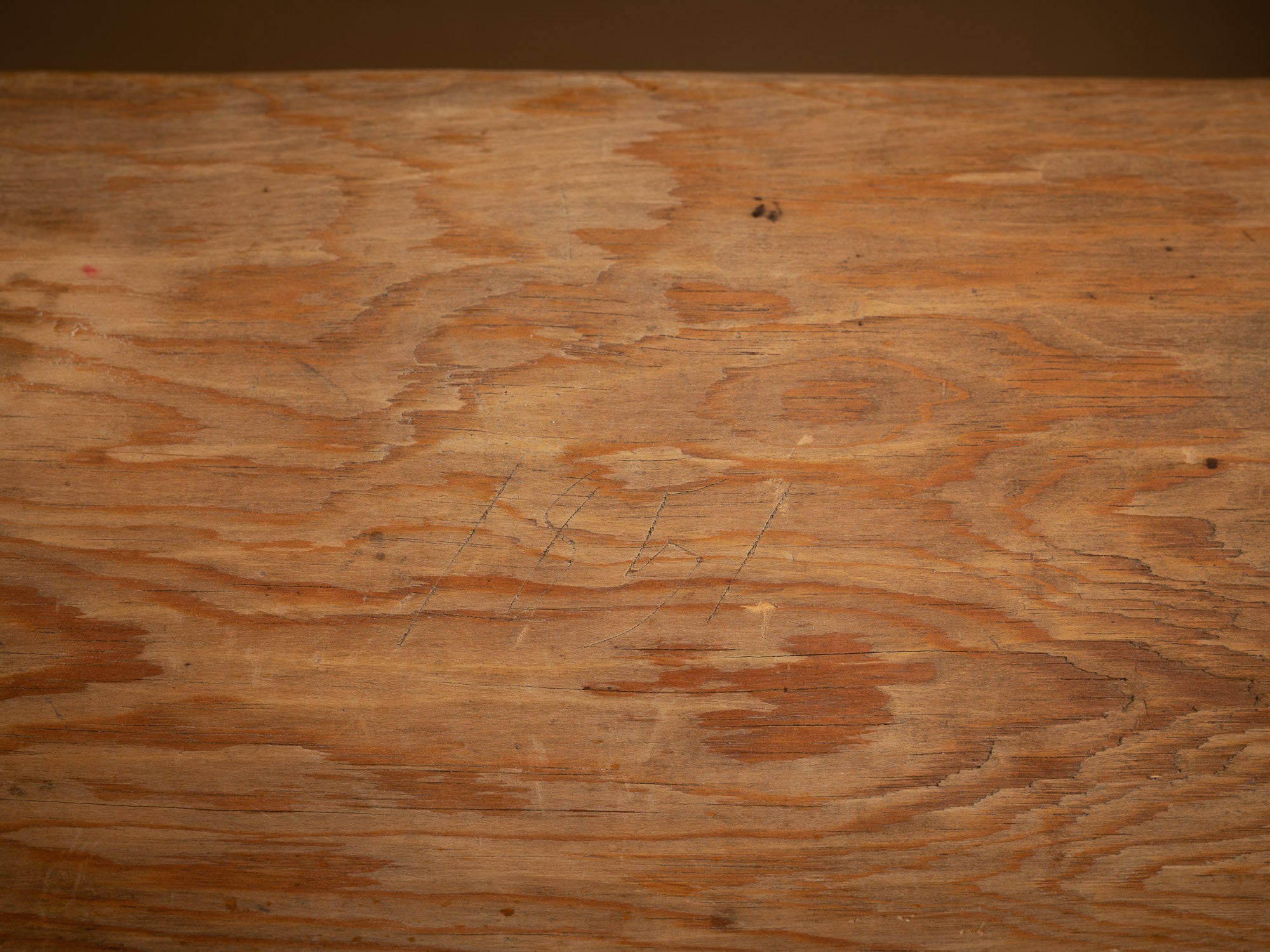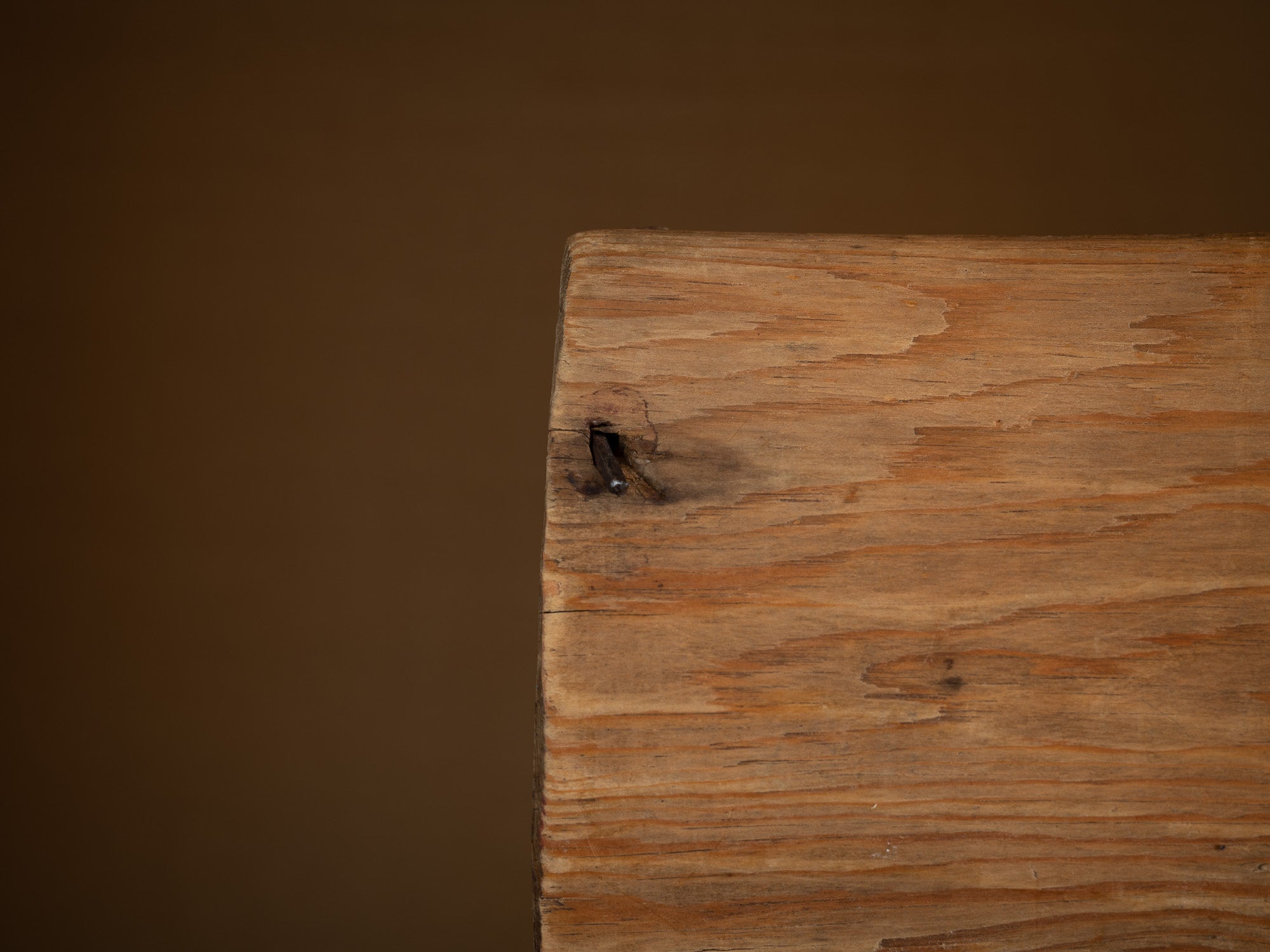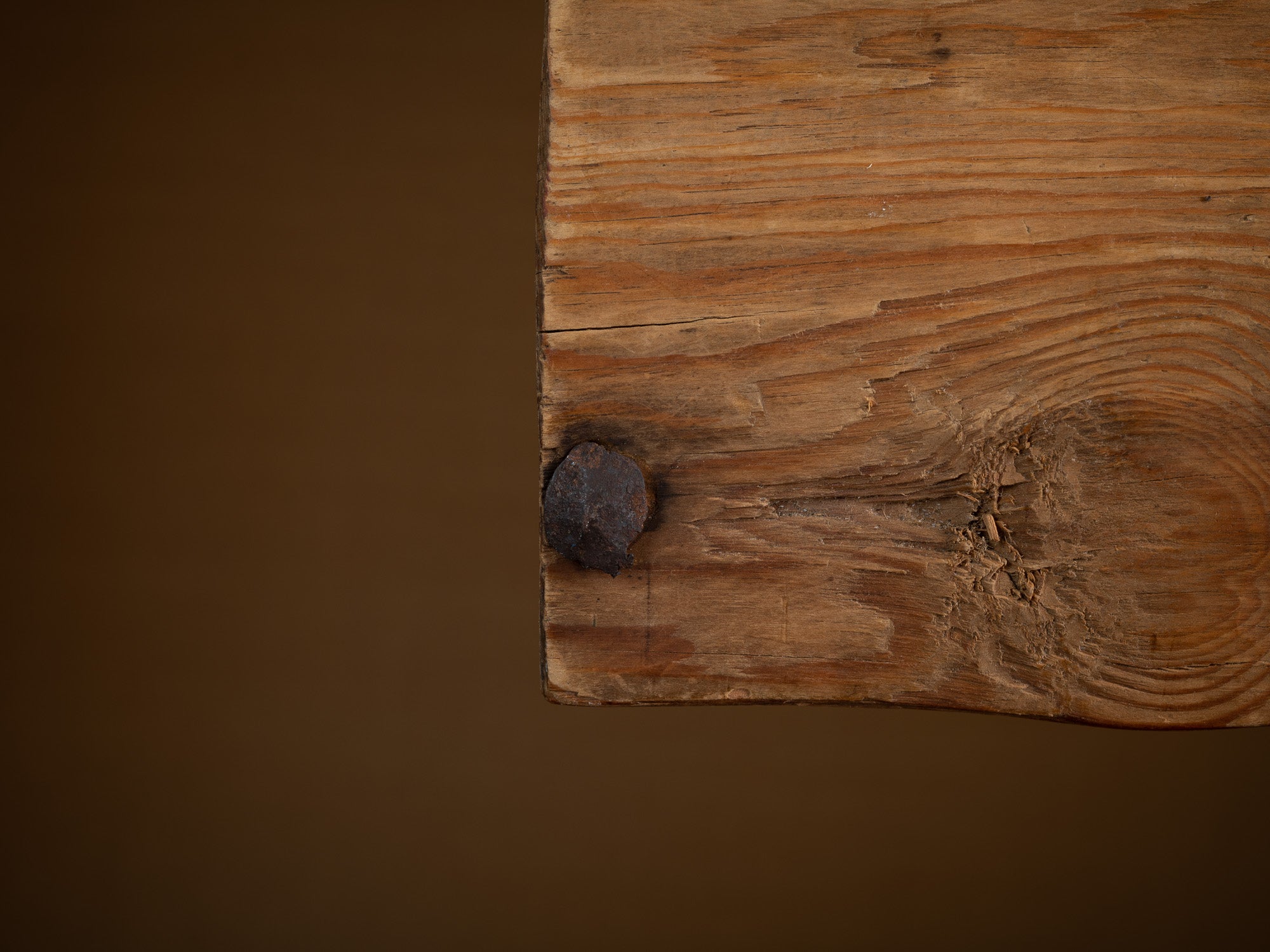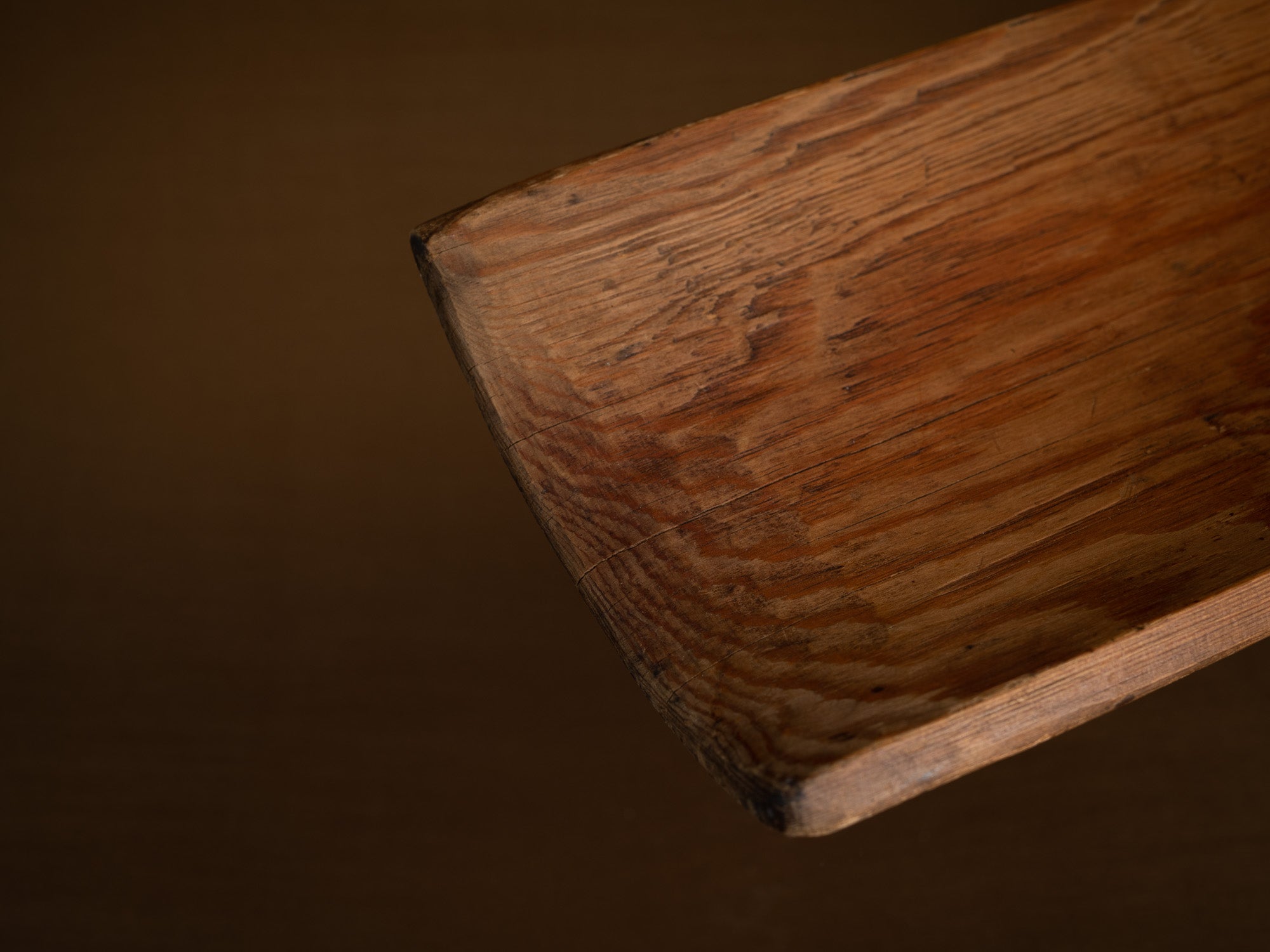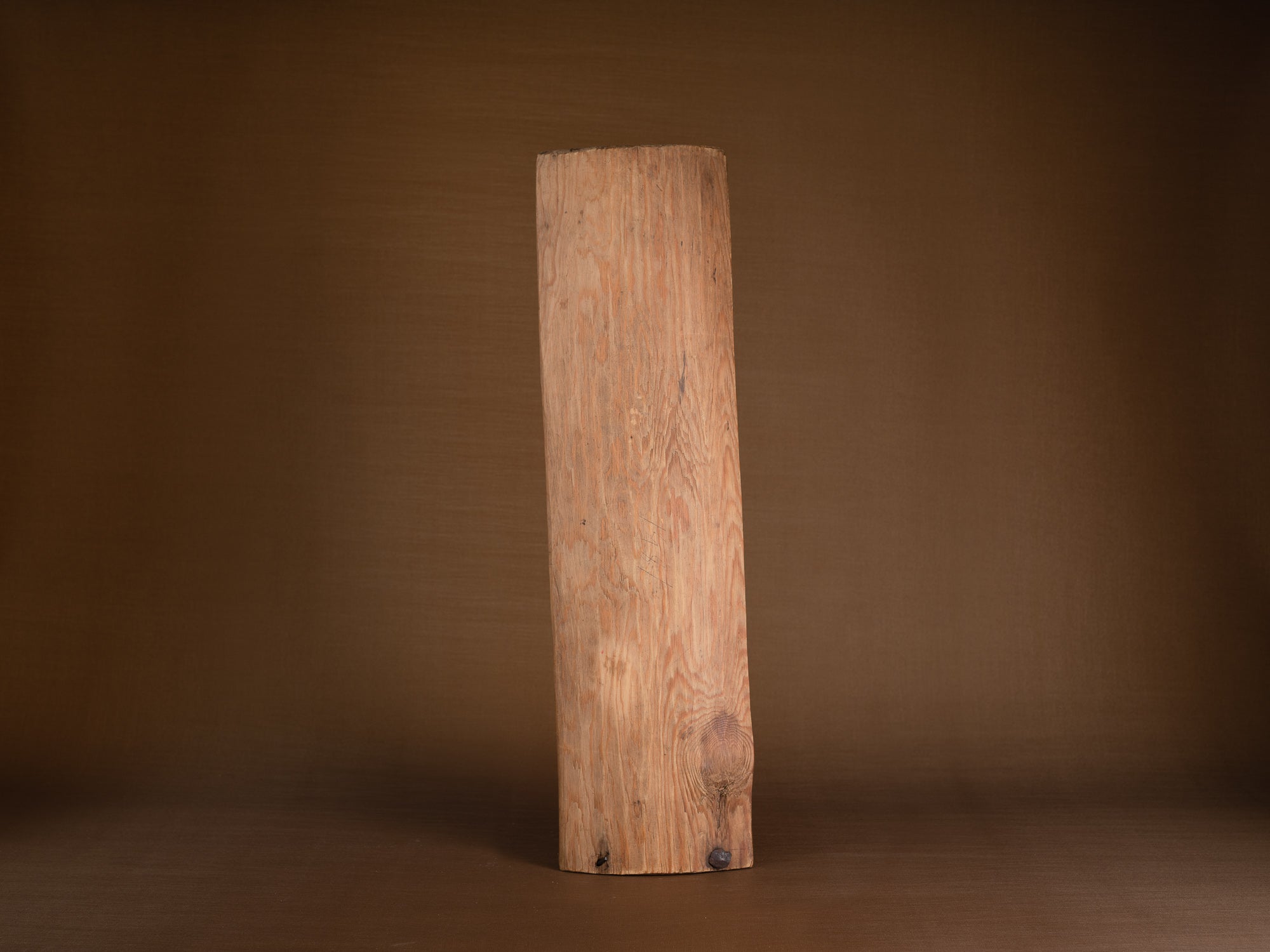
Planche à laver monoxyle en bouleau, Suède (1851)..Peasant birch washboard, Sweden (1851)
€ 300.00
....Livraison gratuite par la poste en France métropolitaine pour toute commande inférieure à 10kg. ..Free shipping by mail in Metropolitan France for order weight less than 10kg. ....
....
Ancien travail paysan
Large planche a laver de lavandière formant coupe monoxyle
Forme rectangulaire concave
Bouleau
Bassin creusé et poli dans un élément de tronc, support clouté pouvant former socle ou console
Superbe patine d'usage
Daté au revers "1851"
À suspendre ou à utiliser comme coupe vide-poche: Un Mitate mono désigne une forme de métaphore, utilisée dans la culture japonaise traditionnelle. Le terme, qui veut dire littéralement « instituer (tate) par le regard (mi) », acte le déplacement d'un usage et d'une fonction par l'élection d'une chose à une nouvelle place. C'est l'idée de porter un regard nouveau et différent sur une chose connue.
Suède
1851
Cette œuvre est un témoignage rare du savoir-faire paysan qui s'exerçait partout sur la planète jusqu'à l'imposition du modèle industriel occidental.
Se rendre sensible à cette beauté simple, c’est peut-être déjà choisir son camp: celui de la vérité des matériaux, de l'indifférence aux hiérarchies de l'art académique, le camp de ceux qui saisissent la beauté où elle est, comme l'outil d'un rapport au monde.
Le livret de cette exposition est à découvrir ici.
Dimensions
H 67 x L 18,5 x P 7,5
Condition
Excellent état - patine, usures et tâches
..
Old peasant work
Large washerwoman's washboard forming monoxyle bowl
Concave rectangular shape
Birch
Basin dug and polished in a trunk element
Superb patina of use
Dated on the reverse "1851"
To hang or to use as an empty-pocket cup: A Mitate mono designates a form of metaphor applied on things, used in traditional Japanese culture. The term, which literally means “to institute (tate) by the gaze (mi)”, records the displacement of a use and a function by the election of a thing to a new place. It's the idea of taking a new and different look at something known.
Sweden
1851
This work is a rare testimony to the peasant know-how that was practiced everywhere on the planet until the imposition of the Western industrial model.
Becoming sensitive to this simple beauty is perhaps already choosing one's camp: that of the truth of materials, of indifference to the hierarchies of academic art, the camp of those who grasp beauty where it is, as the tool of a relationship to the world.
This piece is presented as part of the exhibition: The poetry of earth is never dead, Swedish peasant art, the booklet of this show can be found here.
Dimensions
H 67 x W 18,5 x D 7,5
Condition
Excellent condition - beautiful patina, some wear
....

